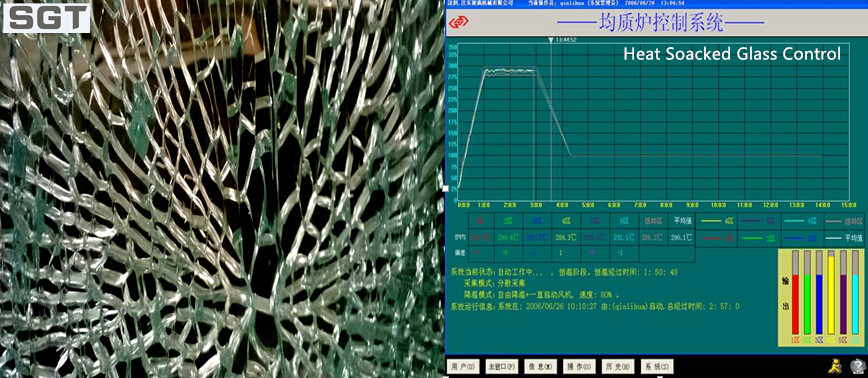
What's it?
Heat soaking involves heating the Toughened Safety Glass to 290ˇăC for a given period of time, then slowly cooling it. This process accelerates the expansion of nickel sulfide stones, and at this temperature, glass panels with nickel sulfide stones are likely to shatter.
The purpose of heat soaking is to reduce the incidence of Toughened Safety Glass breaking spontaneously after installation. While the Heat Soak process does not guarantee there will be no spontaneous breakage after glazing, it is a safeguard for specifying glass in areas where safety from glass fallout is a concern and/or access for replacement is difficult.
Characteristic
ˇô In each case the specifier must assess the risk and consequences of failure before deciding whether to specify Heat Soaked Toughened Safety Glass.
ˇô Heat soaking will reduce the incidence of failure due to nickel sulfide inclusions, therefore reducing the associated replacement, maintenance and disruption costs and the risk of the building being classified as unsafe.
ˇô Heat Soaked Toughened Safety Glass is more expensive than ordinary Toughened Safety Glass, due to the additional processing. However, if a risk analysis indicates that the incidence of nickel sulfide induced or other inclusion failure should be minimised, Heat Soaked Toughened Safety
Applications:
ˇô Structural Balustrades.
ˇô Infill Balustrades ¨C if fallout is an issue.
ˇô Sloped Overhead Glazing.
ˇô Spandrels ¨C if not Heat Strengthened.
ˇô Structural Glazing with Spider or other fittings.
ˇô Commercial Exterior Frameless Glass Doors.